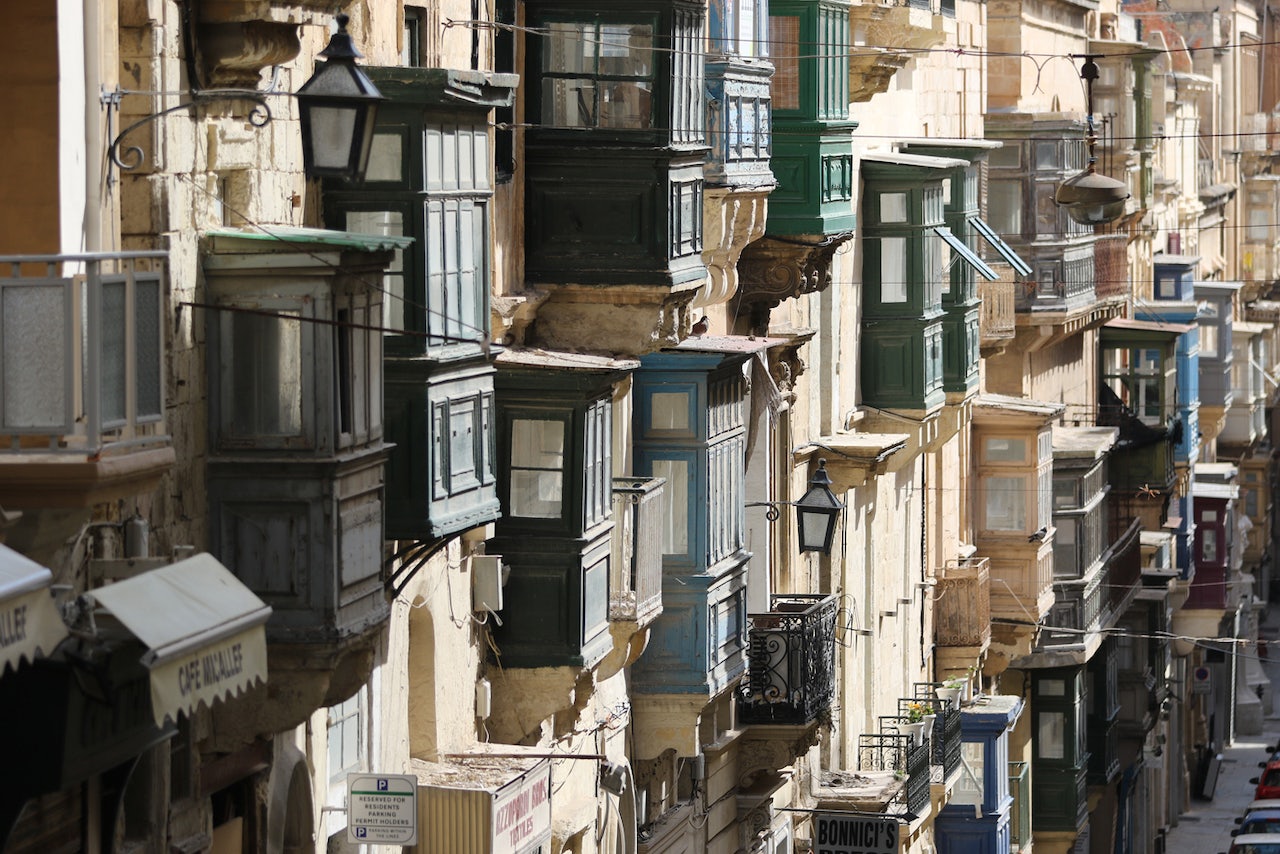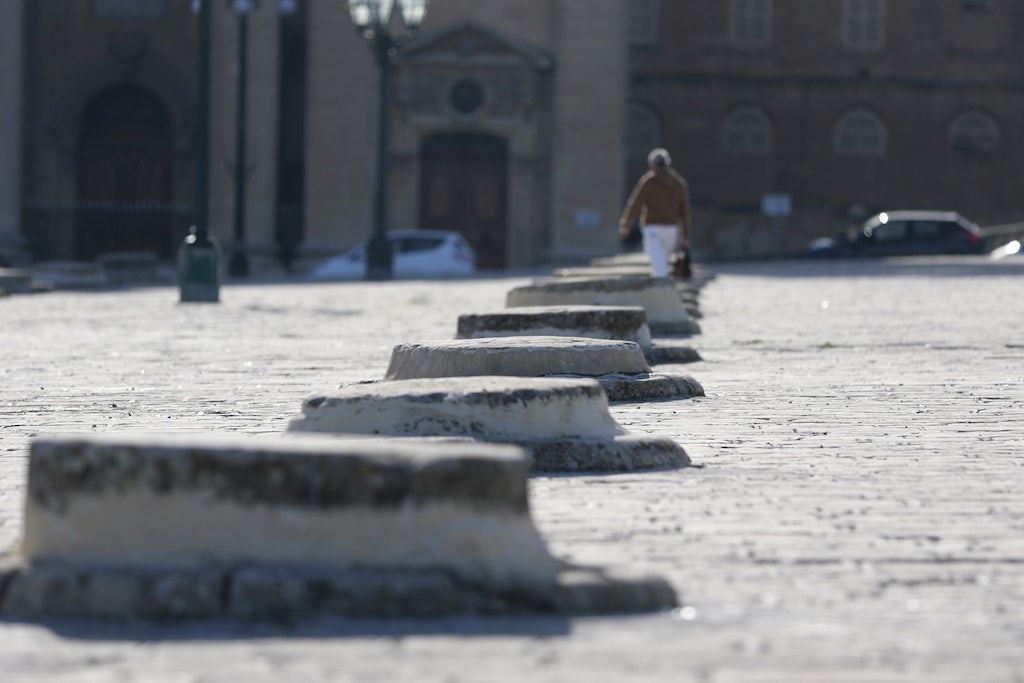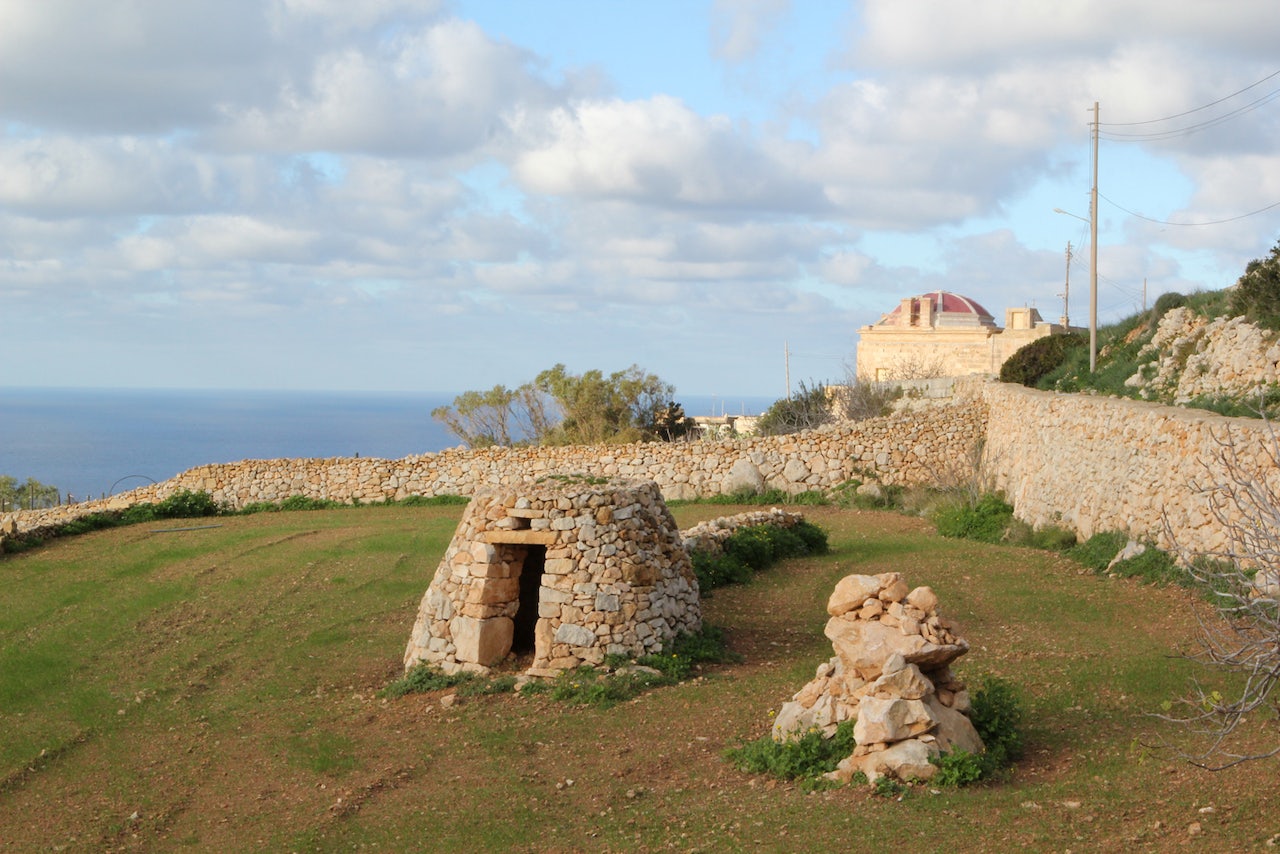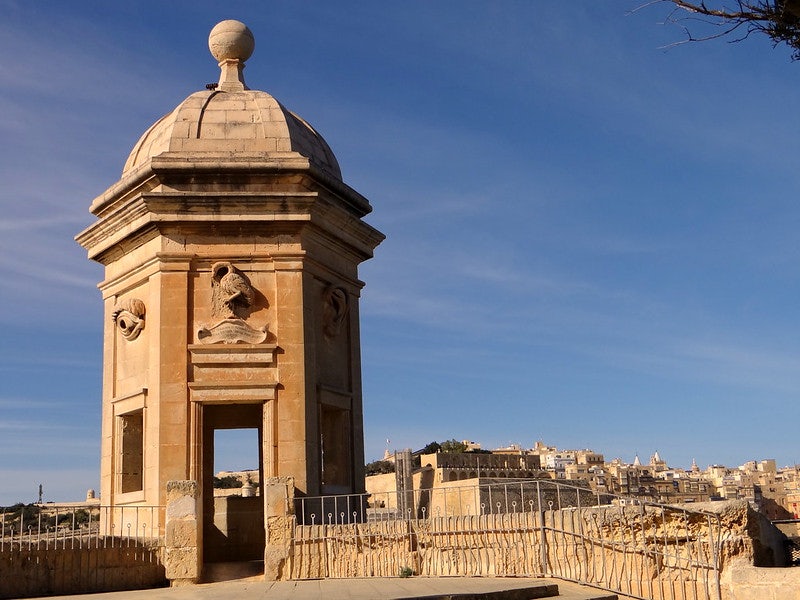Details that make the difference in Malta
1) Wooden balconies
The ornate closed wooden balconies on the façades of houses are a typical element of vernacular Maltese architecture. Even large palaces have them, and it is believed that the first ones to be installed in Malta were those of the Grand Master’s Palace in Valletta. At the very end of South Street, towards Marsamxett Harbour, you can spot an entire block with these gallarijas. These balconies were used to hang clothes while drying, while opening the side windows to allow fresh air to pass through. They are also considered an extension to the house.

2) Granaries
The Order had dug a number of bell-shaped granaries around the harbour area, in order to have enough grain in case of a siege. During the 19th century, the British authorities added more than 70 similar bell-shaped granaries in front of Floriana Parish Church, given that the number of British military personnel had increased. This meant there would always be enough grain, in case of an enemy attack. Nowadays the open area is used for mass public manifestations, whether religious, political or for entertainment.

More hidden secrets in Malta?
Discover more than 360 places to visit in eclectic lists that take you to the hidden gems that tell an interesting story and will make you fall in love with the archipelago, its history, its culture, its nature and, above all, its people.
3) Stone field huts / Girna
In the northern part of Malta, you will spot several field huts, built from the loose limestone that is found locally. These stone huts, called girna in Maltese, have different shapes, and while some may be oval, there are others that are circular, rectangular or squarish. Their size is dictated by the owner’s needs. Although they are no longer used by farmers nowadays, in the past these would have served as shelters against bad weather and a place to store one’s tools. Their ingenious construction attests to the skills of their builders.

4) Mtarfa Clock Tower
During the second half of the 19th century, various British military buildings were erected near the hamlet of Mtarfa. Besides barracks and a hospital, a clock tower was also built. The clock tower, which dates from 1895, is an iconic landmark. While the clock has already been restored, the 22,5-metre tower is currently undergoing a facelift, and it will offer spectacular views from the top when it reopens.

5) Vedette
A characteristic of Maltese fortifications are the various small undecorated towers at strategic locations. The one at Senglea is exceptional in that it is decorated. The decorations around the tower feature an eye and an ear, meaning that the guard must always keep his eyes and ears open, and a crane. A crane holding a stone in its claw is a well-known symbol in heraldry. If the crane falls asleep and lets the rock slip, it will fall on its other claw and wake the crane. This thus implies that a guard must always stay awake, in order to protect the other soldiers.

More hidden secrets in Malta?
Discover more than 360 places to visit in eclectic lists that take you to the hidden gems that tell an interesting story and will make you fall in love with the archipelago, its history, its culture, its nature and, above all, its people.
JOIN THE HIDDEN SECRETS SOCIETY
Unlock a world of hidden gems. Sign up for free and gain access to over 4,000 addresses on our website. Plus, enjoy a 10% discount on all print guides and ebooks. Start exploring today!
Already a member? Log in. |
New here? Sign up. |